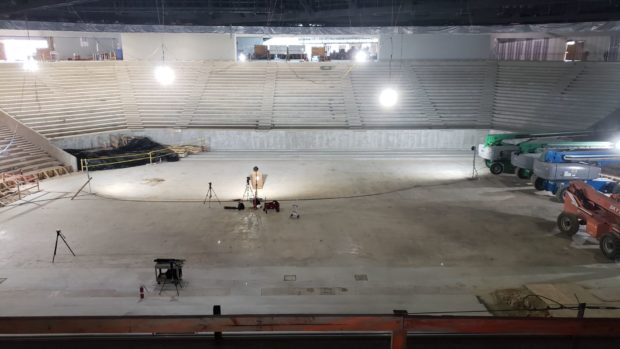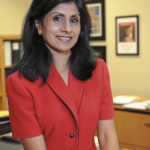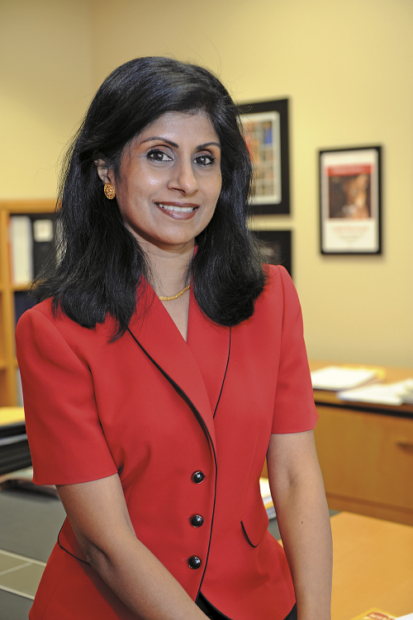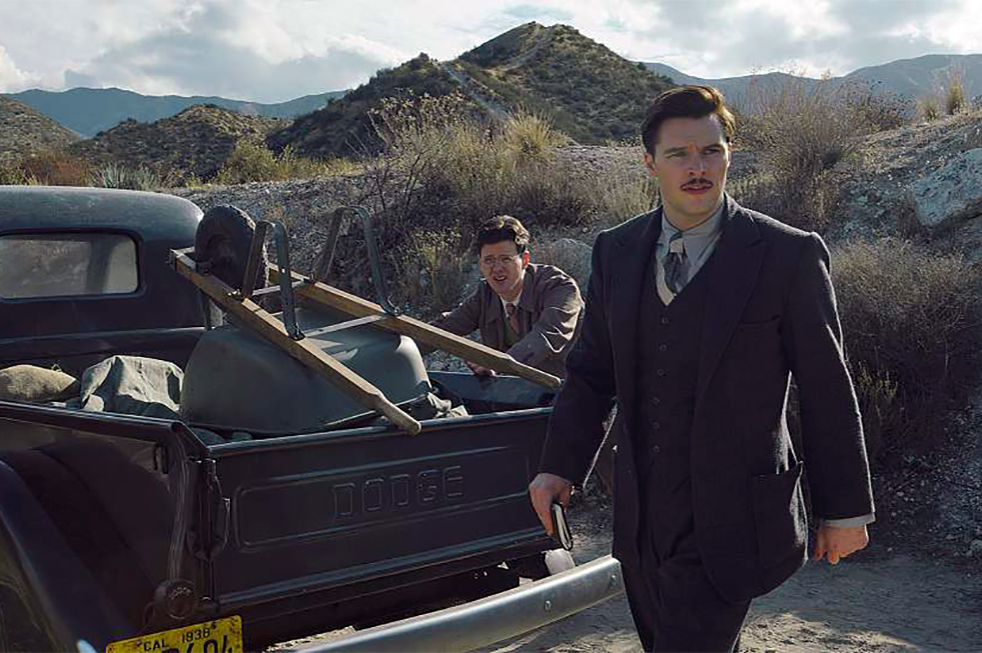Posted on 26 June 2018.
Meet Cal’s new athletic director: Q&A with Jim Knowlton

Wikimedia Commons/Creative Commons
Editor’s note: The following is a Q&A between The Daily Californian’s sports editors and Jim Knowlton, Cal’s new athletic director. The interview has been edited for length and clarity.
The Daily Californian: What did you learn at Air Force, from mentalities to strategies, that you are looking to bring to Cal?
Jim Knowlton: You know, I think the great thing is, in the business of athletics, we’re all really trying to provide a developmental four- or five-year experience for student athletes. And so at Air Force, I was able to put some really good systems in place.
And what I’m doing … in my first 90 days is looking at the systems we already have in place here and then determining, “Wow, that works just as good or better.” And then there’s others where I’m going to look at them and say, “Have we thought of? Could we?” You know, whether it’s … team captain training or whether it’s, you know, some involvement with … our Student-Athlete Advisory Council.
So I’m really looking at, “What do we do now?” — because it’s hard for me to say, “I’m going to bring all this great stuff,” and find out we were already doing great stuff and I don’t need to do that because we already found a better way to do it here at Cal. So I think it’s hard for me to say what I’ll bring until I really get a handle on what we’re doing right now.
DC: Who are some of your biggest inspirations and mentors that you’ve had in your life, and how do they still impact you?
JK: I think the biggest is my dad. You know, my parents were great. And my dad was just one of those model citizens who was a great leader — I learned a lot from him. You know, just his moral, ethical — just, he had that foundation, and he gave it to us.
And so he was very important, and then, you know, along the way I’ve had a bunch of different mentors who have provided different help at different points in time. Some of them were in the Army, some of them were CEOs, some of them were just friends that I met along the way, and each one of them has provided another little tool for the kit bag. You know, I guess “the kit bag of life” as you as you move along and learn.
DC: Do you have any ideas as to how you’re going to improve attendance for the smaller, less popular sports on campus?
JK: We’re working right now on marketing plans for all of our sports. You know, how do we get the word out? And we’re going to really start with football, using that as a way to mobilize and get students excited. We’ll have some pretty big announcements coming up that I think are going to get our students fired up. We want to make (it) so that our students want to go and support our different teams.
And as I said in my press conference, I’ve used food — I used pizza, I used chicken, I used a little of everything — and I think that when people go to one of these games once, they want to come back.
So really, our challenge is: Get them to go once, and then they’re going to get hooked.
“Wow, I can go support our students and watch rugby or go support beach volleyball” — whatever it is. I think our job is to make it exciting — make it a great game day experience and then once they go once, hope that we can continue to bring them back.
DC: How do you manage to keep track of the campus debt and the football program, along with everything else in the athletic department?
JK: I think what I have to do is really focus on 30 sports. But I also have to know that football drives — it’s the economic engine that drives our athletic department. And so we have to continue to get better in football. And I think we have a phenomenal coaching staff. I think coach (Justin) Wilcox is world-class, and I think we just have to continue to rally around him, keep his assistant coaches here, because he wants to win the right way. And to me, that’s really important; winning is not everything — it’s winning the right way. And at Cal, I think that’s what we expect.
So I have to balance it. It means that you don’t sleep as much as you’d like. It means you get off a plane in Oakland at 12:15 and have a meeting early the next morning, and you just have to kind of balance it all.
DC: How do you make sure that your coaches are doing a good job, keeping players safe and doing everything to abide by the expectation that you hold them to?
JK: First and foremost, it’s getting to know them and having a relationship with all the coaches. We have sports supervisors for all of our sports who act on my behalf and make sure we’re following budget.
It’s also bringing them together as a family. So it’s coaches meetings where we talk about best practices — who’s doing something really well? Some of our coaches do a great job with their newsletters, and some of our coaches do a great job on their recruiting weekends, and some of our coaches do a great job with their academic support — how they track their students.
How do we share those best practices so we don’t have one coach doing something really great and someone else not doing it as well? With a little bit of cross-pollination of this information, all of a sudden, “Wow, everyone can learn from that.” There’s not one of our coaches, and certainly the (athletic director), that knows it all. So we’re all learning, and if we can help each other, I think that’s a that’s a key way to continue to raise the bar and make sure that we have exceptional programs.
DC: You did a lot of community outreach at Air Force. Do you have any plans for something like that here in Berkeley?
JK: What I’m doing right now as I talk to coaches is getting an idea of, “What are you doing now? What kind of community service?” And what I’ve learned over many years is community service many times helps those providing as much or more than those receiving.
And if you’re at Cal, you’re blessed. When you’re going through it, sometimes you don’t feel like you’re blessed — when you’re up late at night and you’re grinding academically — but you really are blessed. I think that going out and helping others that are less fortunate, it really allows you to realize how blessed you are.
DC: Do you prefer to watch your teams from the press box or closer to the field?
JK: Even at games, I don’t get to watch as much of a game, as I’m typically talking to fans, I’m taking a look at our fan experience, I’m walking around, “Are we doing a good job atand concessions?” I go talk to fans and get their feedback.
So I’m not getting to watch as much of a game … People think, “Oh, the AD just sits down in his chair and watches the game.” I won’t be in any chair that people can all see the AD sitting there. And you know, many times I’ll go back to Pac-12 Network and watch it that night because I’ve missed a lot of the a lot of the fun part of the game.
But I think my job is really to make sure that what we put on the court is representative of Cal, but also for our fans, to make sure that the entertainment value and the fan experience are exceptional.
DC: How do you bring your perspective as a former athlete to your daily work?
JK: I think my time as a student-athlete had a huge impact on me. I mean from a developmental perspective … how to work well with others, how to compromise, how to lead sometimes, how to follow other times. All those things were great. It was sort of my other classroom — the hockey rink was another classroom for me.
I know that our student-athletes only get four years of this, and they’re just incredible years. With that in mind, everything I think about is, “Are we providing that incredible experience, that developmental experience that they’ll look back at 20 years from now and say, ‘Boy, I wouldn’t trade that for the world?’ ”
DC: Looking back a year from now, what would you want your colleagues or the Cal community to say about you and what you have accomplished?
JK: I would hope one of the things would be our family here, the athletic department, would feel like we brought the family closer together. You know, we’ve worked hard at doing some things; we’ve already started implementing some of the things that we’re going to do to bring the family together, because this is hard. It’s a hard job to be in athletics. … And so you really have to have a family to feel good about coming to work. So that would be the first thing.
I’d hope our student-athletes are seeing that we’re continuing to improve the experience for them. Certainly, we’d like to be on the national stage doing a great job.
And then I think I’d love to be able to say that we are on a path to a balanced budget that’s sustainable over the long term. I think that really is important to us, to really have a budget where every year we’re not struggling to kind of balance it, but we’ve found a way to have a healthy, strategic, long-term budget that makes sense. … We’re going to start working on a strategic plan for athletics, which we just don’t have right now, to help define what’s important.
I think if we had all of those things moving in the right direction, at least for five minutes, I’d sit back and say, “Man, I feel really good after one year.”
DC: Is there anything that people don’t know about you, or about being an athletic director, that you that you want them to know?
JK: I think the thing that, yeah, I’d love everyone to know is, I’m excited about being here.
I really think that I came from two educators — education has been a key part of all my life. I’m a professional engineer and taught civil engineering, and I think that I’m here because I really want to be. I’m here because I want to be at the No. 1 public institution in the country. I really believe in scholar-athletes, and not every school believes that, but Cal does.
And so, is it harder to find scholar-athletes when you’re recruiting? Yeah, it is. I mean, you have to be more selective; you can’t talk to everybody. There are other schools that can accept kids that we just don’t bring in here because they wouldn’t survive in the academic environment. … I feel really good that we are developing scholar-athletes who are going to leave here and are going to have a degree that’s going to set them up for a successful life.
Christie Aguilar is the sports editor. Contact her at caguilar@dailycal.org.
Alison White is the assistant sports editor. Contact her at awhite@dailycal.org.
The Daily Californian





























